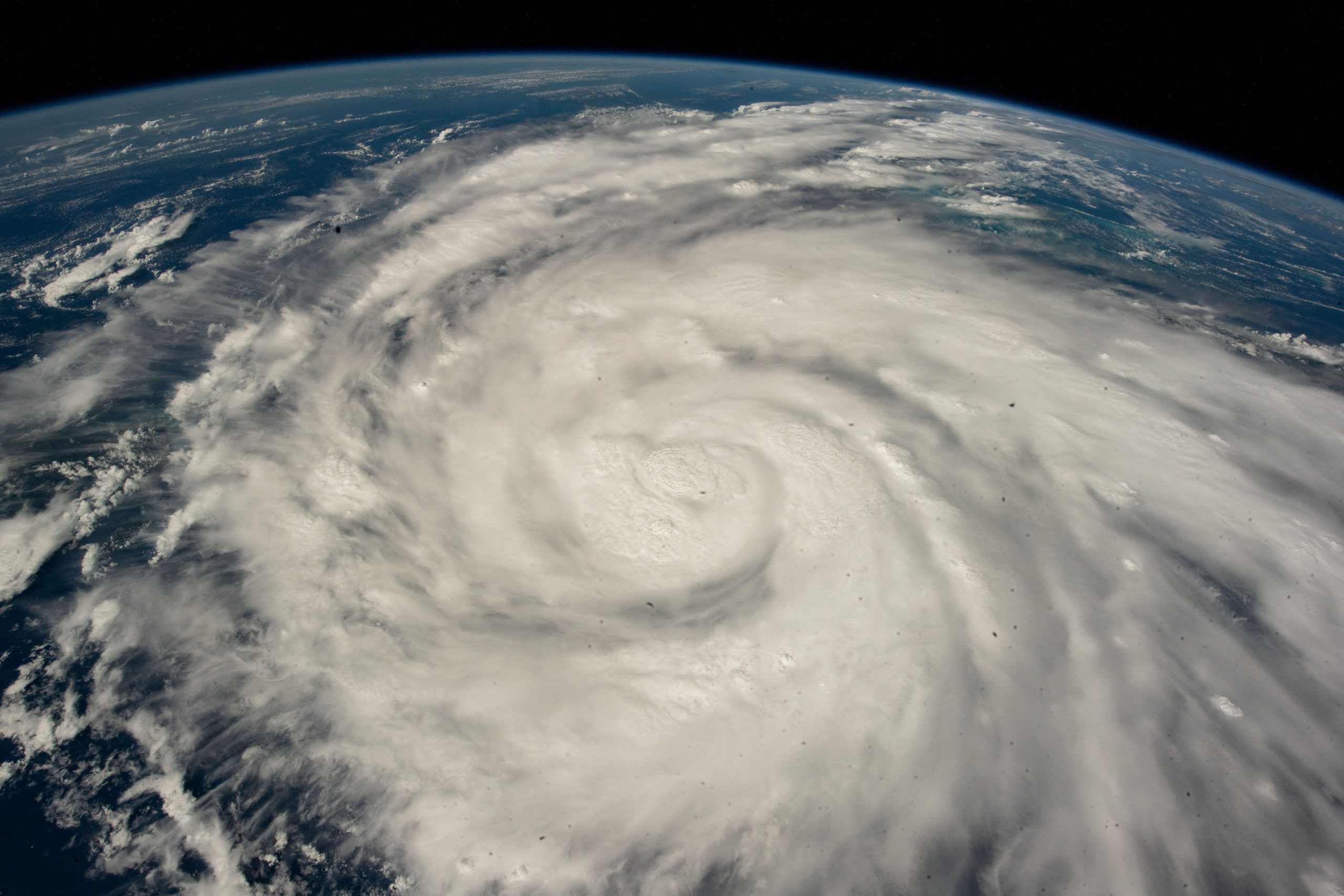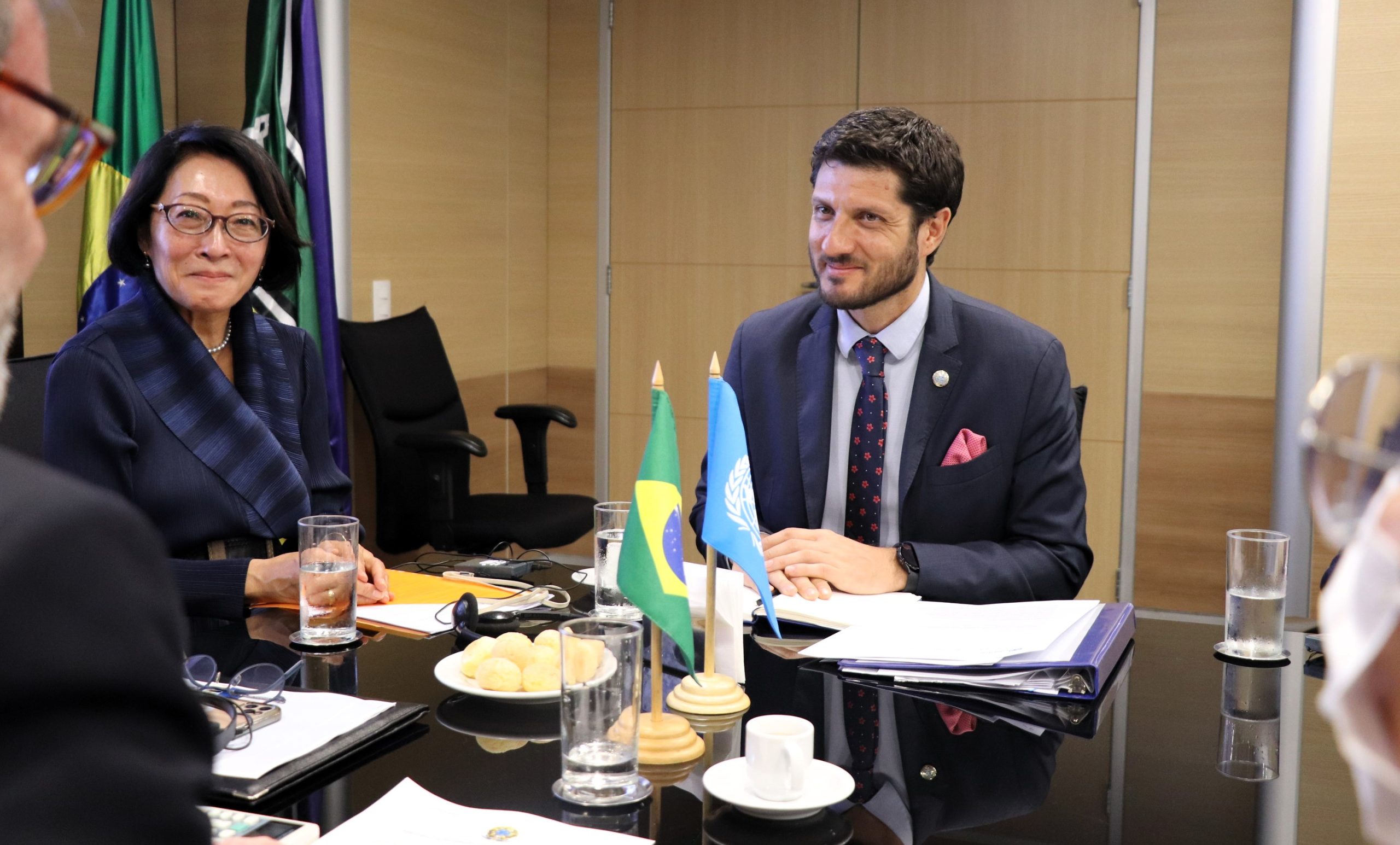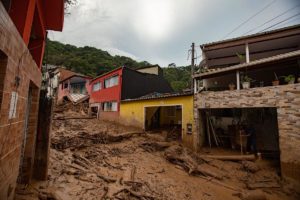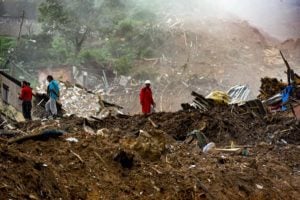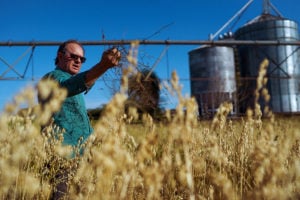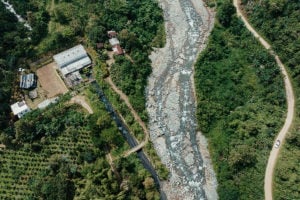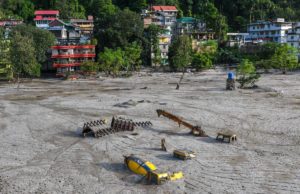Latin America and the Caribbean is the second-most vulnerable region to disasters globally, after Asia. This is due to its high exposure to climate-related phenomena such as hurricanes, droughts and forest fires, the advance of urbanisation without adequate planning, and its multiple social and economic vulnerabilities, among other factors.
A disaster, either sudden or gradual, can cause great human, economic, material or environmental losses. Disaster risk reduction (DRR) refers to taking measures to prevent new disasters and reduce existing ones by identifying the root causes behind them. According to the United Nations Office for Disaster Risk Reduction (UNDRR), for every dollar invested in DRR up to US$15 can be saved in recovery costs following a disaster.
Nahuel Arenas García is the head of the UNDRR’s regional office for the Americas and the Caribbean. The organisation works with governments, communities and the private sector to help them gain a better understanding of risk reduction and take action to prevent disasters.
In an interview with Diálogo Chino, Arenas García described the work the organisation is doing on disaster risk reduction in Latin America in the face of the climate crisis. He also highlighted the importance of early warning systems in the region, and the role of science and technology in developing effective disaster prevention strategies.
Diálogo Chino: What is DRR and why is it particularly relevant for Latin America and the Caribbean?
Nahuel Arenas García: Disaster risk reduction is a comprehensive approach that seeks to prevent and mitigate the adverse effects of disasters, through systematic efforts to analyse and reduce existing risks, manage residual risk and avoid the creation of new ones.
Examples of DRR efforts include reducing exposure to hazards, reducing the vulnerability of people and their property, sound land and environmental management, and improved preparedness and early warning systems.
In Latin America and the Caribbean, this issue is particularly relevant because of the region’s vulnerability to various phenomena, including hurricanes, earthquakes, droughts and forest fires. One out of every four disasters recorded globally [between 1998 and 2017] have occurred in Latin America and the Caribbean. It is also a question of how systems are connected and how we ensure prevention: 53% of global economic losses due to climate disasters [in that same period] occurred in the region.
How significant are “natural” phenomena for Latin America and the Caribbean?
Hazards can be natural, such as tropical storms and volcanic eruptions; anthropogenic, caused by human action, such as a technological or environmental disaster; or even biological, such as the Covid-19 pandemic. The transformation of hazards into disasters is always the result of human actions – or inaction – and decisions.
Climate change will not only increase the number of such events, but also their magnitude. And it is already happening: climate-related disasters have almost doubled compared to the last 20 years. This has exacerbated the inequalities within and between countries, and those that contribute little to emissions often experience the worst impacts of the climate emergency.
DRR is a key pillar in the face of the climate crisis, as it seeks to reduce population vulnerability and prepare them to face extreme events more effectively, strengthening resilience. If we do not implement policies to reduce risks and mitigate these effects, we are further dooming our future.
The transformation of hazards into disasters is always the result of human actions – or inaction – and decisionsNahuel Arenas García, UN Office for Disaster Risk Reduction
How is Latin America and the Caribbean engaging with DRR?
Latin America and the Caribbean is one of the regions that has contributed the most knowledge to disaster risk [management] – for example, the paradigm shift that meant making the leap from “disaster preparedness and response” to “an understanding of risk in order to reduce it” was rapidly incorporated by countries. The region now has a community working on DRR that is growing in size every year, contributing to the understanding of the subject matter.
53%
of global economic losses due to climate-related disasters between 1998 and 2017 occurred in Latin America, according to UNDRR
However, the actions expressed in public policies have not been able to progress in the same direction and at the same speed. Most efforts are concentrated on emergency preparedness and response, and little progress has been made in reversing the underlying risk factors, so the risk continues to rise rapidly.
There has been progress in the availability of risk and disaster information, but it is still insufficient. There is a need to improve the quality of data, and to update and expand the country’s coverage to get a better understanding of trends in the impact of disasters.
The UN’s Early Warnings for All initiative seeks to expand the use of warning tools that use integrated communication systems to help communities prepare for hazardous weather events. How advanced is their use in Latin America and the Caribbean?
Early warning systems are a tool that has proven to be very efficient to prepare for and take early action on threats. The Early Warnings for All initiative is an opportunity to achieve the implementation of multi-hazard early warning systems for everyone. Investment and technical support will be mobilised in all countries to achieve this goal.
Because of its historical condition [of being highly vulnerable to extreme weather events], the Caribbean is one of the regions that is making most progress in the implementation of this initiative. The launch of the initiative took place in February, in Barbados, a country with a robust national policy that is at the forefront of this matter.
The Covid-19 pandemic was a catalyst for this initiative, and laid bare the need to strengthen and coordinate many systems in such a way that they can be multi-threat, designed to detect different threats that can occur individually, simultaneously or in a cascade, and to be able to develop a comprehensive frontline response that allows for coordination between different sectors.
Communities should have easy access to information on climate risks and the impacts of climate change in order to better appreciate the impact of their actionsNahuel Arenas García, UN Office for Disaster Risk Reduction
What is the role of science and technology in DRR action in Latin America and the Caribbean?
Science and technology play a key role in DRR in our region. Through technological advances and the collection of scientific data, we are able to make informed decisions and develop effective prevention and mitigation strategies. This helps us to build evidence, and understand models and structures to better assess risks and have more effective and efficient DRR.
Scientific knowledge and evidence need to be strengthened to better inform plans and policies, while communication with and within communities needs to be improved in order to act as an effective bridge between knowledge and behaviour. Communities should have easy access to information on climate risks, the impacts of climate change, the associated impacts and the cost of inaction, in order to better appreciate the impact of their actions. All this is achieved by strengthening and improving the use of science and technology in DRR.
We must have support and resources in favour of science and technology for DRR, and we need to understand the current challenges that impede policy- and decision-makers in making more appropriate use of the available scientific research.
What other challenges face DRR in Latin America and the Caribbean?
Despite the progress that’s been made, we face outstanding DRR challenges in the region. We need to strengthen post-disaster response and recovery capacities, as well as promoting greater public awareness of the importance of preparedness. It is also essential to advance the integration of DRR into policies and planning at all levels of government and in various sectors, such as health, education and infrastructure.
We need to increase the capacities of national offices for risk reduction, as well as the national meteorological services. We also need to strengthen inter- and multi-sectoral coordination.
And without a doubt, we must implement more science and technology in our decision making, as well as making progress in the creation and strengthening of multi-hazard early warning systems, to reduce the impacts of disasters and build a safer region. The future ahead of us depends precisely on the decisions we make today.
